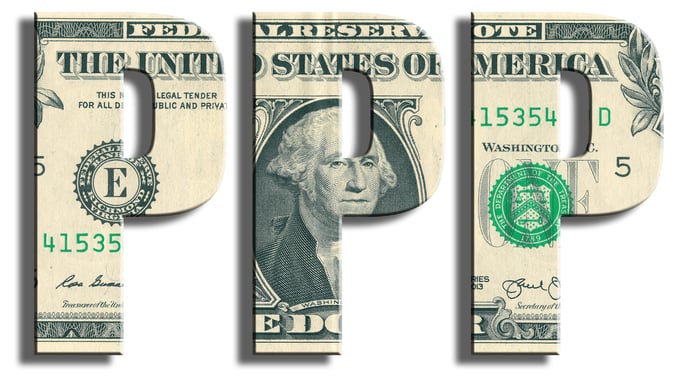
So, you've received your Paycheck Protection Program (PPP) loan money. Now what?
Before we dive into the three steps to take, it’s important to understand the PPP basics.
The Department of Treasury calculated how much the small businesses in America needed in order to keep their employees paid for 8 weeks. The purpose of the $349 billion act is to help save the economy and reduce the number of people on unemployment.
The primary purpose of this big stimulus package is to help businesses keep their people employed and their lights on. You can use up to 25% for certain operating expenses.
A rule of thumb for what the PPP Act is meant to help:
- Keep Your People Paid (Payroll Expenses)
- Keep the Doors Open (Material and direct labor costs)
- Keep the Lights On (Rent)
The structure of the deal is a grant if you keep headcount and spend 75% of the money on paying your people at least 75% of what they were previously making.
Important! You're required to prove that you spent 75% of your money on payroll (or payroll related expenses) in order for the money to qualify as a grant. If you do not, the money will be a loan you are expected to pay back.
3 Steps to Take Immediately after receiving PPP money
Here are the three steps to take immediately after receiving the PPP money (and how to abide by the guidelines to make sure money is a grant vs. a loan).
1.Open A Separate Bank Account
First, head to the bank. You'll want to open up a separate bank account and put all of the PPP money you receive into this account. This is a temporary account until the money is accounted for.
It's the easiest way to track and create an audit trail so you can show the government how you are spending the money. The most important accounting here is around the payroll and related people costs. If you track payroll and benefit spending so that all those costs come out of the grant, that is the best way to make it easy to be audit ready once the government tells us what supporting documentation they need.
Do this: Try to have as much of the PPP spending and related expenses as possible come out of this account. This may mean asking the vendors who ACH your bank account to use this new account for these services:
- Payroll & Payroll Taxes
*Including: sick, medical, or family leave
- Health insurance
- Retirement benefits
Do this: The non-payroll costs -- rent, utilities, interest expense -- can be tracked in the normal account on the general ledger (because it is auto-payment).
You have to maintain your fully loaded labor costs to be no less than 75% of the total cost of the people and your head count.
Important! If you fire people or lower your salaries by 25% or more, than the PPP money becomes a loan, not a grant.
You may use 25% of the money for some operating expenses. This includes:
- Rent
- The interest on your mortgage
- Utilities
2. Update Your Accounting Codes
Whether you open a new bank account or not, you need to make sure you track the PPP spending. Here's how to set up your books to properly track expenses and costs...
Remember, this will end, so we don't want to make any changes that will make it harder to run comparative financial statements. How you update QuickBooks will depend on how you use QuickBooks now.
2. Next, run a Profit & Loss report by Class OR by customer.
This will give you exactly the amount of money you spend each month on a piece of paper -- your comparative income statement. This is an easy way of showing you rent, interest expense, and payroll without changing the chart of accounts*.
*We do not recommend setting up a new chart of accounts. This will make comparative reporting difficult.
Important! Why do you need to do this? Because we’re going to have to do some reconciliation with the government. The guidelines are not yet clear, but this will make sure you have the data to be in compliance.
3. Track covered costs
You'll have to certify that you had economic impact, and that you spent 75% of your money on payroll (or payroll related expenses).
How do you do this? Through your payroll tax returns.
This is how you calculate the amount of money you are eligible to receive in the first place. By submitting your payroll tax returns with the application, the government will be aware of your payroll liabilities.
You'll need to prove that you didn't dip below that. So, by tracking it separately, it will make this process a lot easier.
Important! The government will look at the first quarter of 2020 as your baseline, and you can't go below 75% of that.
At least 75% of the money needs to be spent on your people costs -- the cost of your employee salaries and burden -- your fringe burden rate. It has to be at least 75% of what your total labor costs were in the first quarter of this year.
It is important to be tracking your actual expenses against what’s covered.
What happens if you spend money on things that are not covered? The money from the PPP becomes a loan.
Even as a loan, it's still a great deal from the government! It's a 1% interest rate and you don't have to make any payments for six months. The first payment has to be made by January 2021, and you have two years to pay it back in full.
Properly adjusting your books is a great way to track how much money is being spent on your people, and helping you better prepare for June.

.png?width=563&height=144&name=New%20GF%20Logo%20(37).png)
